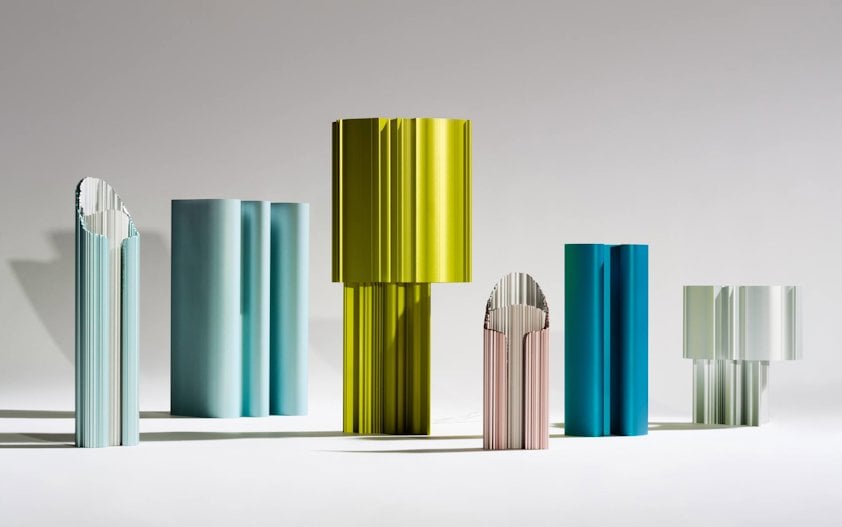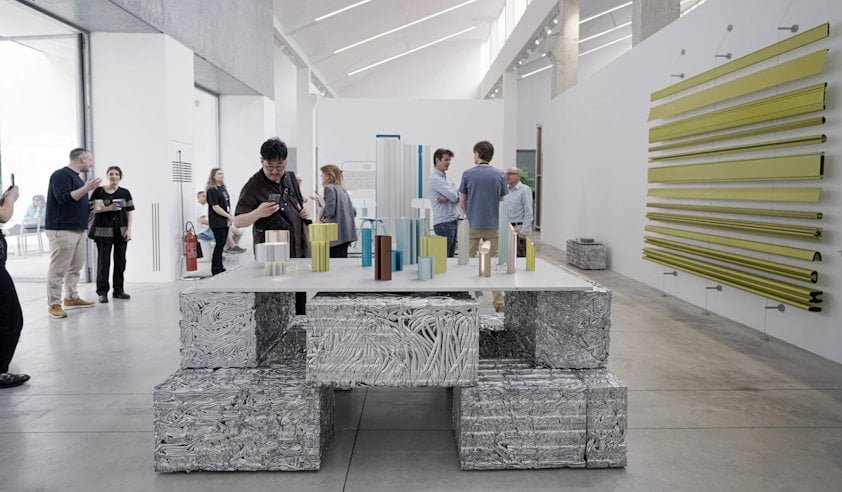Industrial designers are important influencers of material selection in all industries. That is why Hydro has been part of Milan Design Week for years, where half a million people gather every spring to view the latest from the world of design.
For the 100R exhibition, Hydro’s experts have worked closely with selected designers, from the initial design idea to the final prototypes.
“Why does an aluminium and renewable energy company like Hydro work with designers? Because we believe in the power of partnerships. By working with leading designers, we want to challenge the way things are made and pull the industry in a greener direction by getting more manufacturers to understand how to select materials based on sustainability aspects,” says Trond Olaf Christophersen, Executive Vice President Corporate Development and acting CFO in Hydro.

Recycling is the fastest way towards Hydro’s goal of delivering zero-carbon aluminium and growth in recycling is a key part of Hydro’s 2030 strategy. With a growing demand for low-carbon, recycled products, Hydro works closely with its customers to create recycled solutions which comply with their product specifications. This unlocks the potential for more use of recycled materials in new segments such as transportation, renewable energy infrastructure and consumer durable goods.
Inspiring designers from all industries to consider recycled materials
Of the 10 million tonnes of furniture* that is thrown away in Europe every year, only 10 percent is recycled. This means designers have a powerful role to play in accelerating the green transition, as up to 80 percent of a product’s environmental impact is decided at the drawing board, material selection and how the product is designed decided whether it can easily be recycled after use. Access to low-carbon, recycled materials is crucial to lower the footprint of furniture.
“We are moving towards a future where utilizing materials already in circulation is imperative for sustainable living and manufacturing. Through uniting with designers, we want to show how scrap can be turned into pristine looking design objects, ready for mass production, while paving the way for the green transition,” says Asle Forsbak, 100R project lead and Marketing & Communication Director at Hydro Extrusions.

Aluminium’s footprint can vary dramatically depending on production methods. Aluminium produced using fossil fuels carries a much heavier burden than recycled aluminium or aluminium produced using renewable energy sources. This is why Hydro is a champion for clear material labeling across industries.
By recycling post-consumer scrap, which is aluminium that has lived a life as an old window frame, a used car part, or other product, the material reaches a very low carbon footprint. Hydro CIRCAL recycled aluminium is available with 75 percent post-consumer scrap and with 100 percent post-consumer scrap in limited amounts. Hydro CIRCAL 100R has a carbon footprint below 0.5 kilo CO2 per kilo aluminium, 33 times lower than the global average.
Visit Hydro at the 100R exhibition in Milan: The 100R exhibition will be shown at Spazio Maiocchi during Milan Design Week 2024, April 15 – 21.
Launched in Milan in 1961 as a vehicle for promoting Italian exports of furnishing and accessories, the Salone Internazionale del Mobile (‘Milan Design Week’) is the global benchmark event for the furnishing and design sector.
Industrial designers are important influencers of material selection in all industries. That is why Hydro has been part of Milan Design Week for years, where half a million people gather every spring to view the latest from the world of design. For the 100R exhibition in 2024, Hydro’s experts have worked closely with selected designers, from the initial design idea to the final prototypes. The designers are Inga Sempé, Max Lamb, Andreas Engesvik, Shane Schneck, Rachel Griffin, John Tree and Philippe Malouin with Art Director Lars Beller Fjetland.
* Circular economy in the furniture industry (europa.eu)
Published: April 16, 2024








